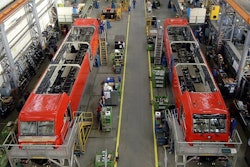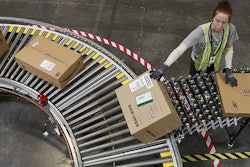Every year brings a new set of risks that enter the industrial workplace. From shifting economies, geo-positioning, emerging technologies and new hazardous and non-hazardous materials, risk managers in the manufacturing space constantly need to evolve their processes.
With these constant changes, industrial manufacturing is often plays “catch up” when it comes to risk management. The emergence of unknown risks creates an immediate problem for many risk managers, who continue to find themselves in reactive mode. And because these unknown risks can have lasting impacts, senior leadership teams are becoming more involved in enterprise risk management to minimize disruption to operations.
Many of the risk managers with whom I speak want to more effectively track emerging risks and improve visibility into their enterprise impact.
While my advice changes slightly based on the plant and manufacturer, my counsel ultimately addresses three components: implementing a risk forecasting program, creating a risk remediation strategy to address these risks, and utilizing an integrated risk management tool to bring full visibility to enterprise risks.
Creating a Risk Forecasting Model
I recently read the PWC 2015 Risk in Review Report that mentioned only 47 percent of manufacturing companies are managing and forecasting emerging risks. This means most manufacturers still take a reactive approach to risk management, leaving them unable to anticipate and quickly respond to risks. This also leads to unexpected incidents, downtime and loss of production.
In many cases, improper forecasting comes down to a lack of data. Whether the data is stored in individual silos or isn’t being monitored at all, the inability to bring a complete view to data greatly reduces your chances to recognize risk patterns.
Identifying risk patterns is central to creating a risk forecasting model, as the data provides the required insights into trends and steps to resolution. Data including incident history, resolution history and operational changes helps accurately forecast emerging risks. If you find yourself unable to easily access and providing meaningful analytics to these data points, it may be time to re-examine your forecasting model.
Developing Risk Remediation Strategies
While identifying emerging risks is critical to success, being able to act upon these risks in a timely manner is just as important. Today’s manufacturing executives understand that each minute that passes after a risk is identified is another dollar lost. Thus, manufacturers must have an established remediation strategy aligned to each risk. These strategies should clearly define the processes required to mitigate the risk, including procedure documentation and onsite training.
After remediation strategies are in place, ongoing testing and revisions remain crucial to achieving long-term efficiency. Because the risk management space is constantly evolving, managers also must understand processes that work today may not work tomorrow.
I recently spoke with a plant manager who mentioned they were experiencing an increase in slip and fall injuries in the workplace. Despite having strategies to prevent these incidents, the dramatic increase led the management team to re-evaluate their processes around this risk.
By evaluating the risk data, managers quickly connected the increase in injuries to a recent change in the plant’s janitorial company, which used different cleaning products. From this data visibility, the team quickly refined its remediation strategy to provide workers with less slick floors and, thus, a safer work environment.
Remember, the quicker you can identify a problem though data analysis, the quicker you can implement a remediation strategy, effectively reducing corrective costs, productivity losses and, in some scenarios, even save your brand reputation.
Choosing the Right Risk Management Tools
Because risk forecasting and remediation is dependent upon having accurate and precise data, risk managers need to have the proper technology tools to analyze data and make it predictive. While numerous technology solutions have this information, I recommend solutions that provide an integrated view into enterprise risks.
A fully integrated risk management system removes data silos. By enabling data-sharing across locations and platforms, risk managers benefit from an enterprise-wide view of organizational risk data. The benefits of this view are numerous, including improved visibility into enterprise-wide risks, more data access to identify trends and greater access to remediation data.
An integrated system also consolidates claim data, safety reporting, training documents, compliance reports and more. Having easier access to this information allows risk managers across all department to review, update, and resolve issues.
Preparation is Key
In today’s environment, a singular, reactive view to risk is not enough. Instead, we must be more proactive in our risk management approaches to address emerging risks before they become enterprise concerns.
Quin Rodriguez is Vice President of Strategic Marketing at Riskonnect.






















